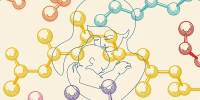Physical activity can help secondary school pupils study and feel better. An increasing collection of evidence demonstrates the multiple advantages of introducing physical activity into the school day.
According to a study done by the University of Eastern Finland, adolescents who participate in active school transportation and leisure-time physical exercise outperform their inactive peers in secondary school. Regular leisure-time physical activity, even in small amounts, was also linked to a lower risk of school burnout. The research was published in the European Journal of Public Health.
The link between physical activity and learning and academic ability is complicated. Prior research, however, has demonstrated that school-based physical exercise, such as physical education, can boost classroom performance, particularly in mathematics. Despite this, little research has looked into the relationship between active school transportation and academic outcomes. The majority of past research on physical exercise and school wellbeing has been conducted on university-level students.
The results regarding active school transport were particularly intriguing as researchers are increasingly interested in the health benefits of travel-related walking and cycling. Being physically active before school could, for example, enhance concentration in the classroom, explaining our observations.
Juuso Jussila
Researchers discovered that active school transportation was connected with a better likelihood of high perceived academic achievement and self-reported competency in academic skills in a recent study of over 34,000 adolescents. The link was considerably stronger for moderate-to-vigorous physical activity during leisure time. The association between leisure-time physical exercise and mathematics ability stood out, as it has in previous investigations.
“The results regarding active school transport were particularly intriguing as researchers are increasingly interested in the health benefits of travel-related walking and cycling. Being physically active before school could, for example, enhance concentration in the classroom, explaining our observations. However, due to the cross-sectional design, our study cannot establish causality,” says Juuso Jussila, a Doctoral Researcher at the University of Eastern Finland.

“Due to support from prospective and intervention studies, there were no surprises regarding the strong association between leisure-time physical activity and perceived academic achievement.” Although we do not know all of the explaining mechanisms, increased coordination and perceptual-motor skills, which are necessary in many team sports, can at least partially explain these findings. Leisure-time physical activity is also more intensive than active school transportation, resulting in increases in brain-derived neurotrophic factor in our circulation and, as a result, improvements in cognitive performance.”
Physical exercise during leisure time was also found to be inversely related to school burnout. Even 30 minutes of moderate-to-vigorous movement per week was related to a 24% decreased risk of school burnout. When compared to their physically inactive peers, adolescents who engaged in leisure-time physical activity for 4 to 6 hours per week had a 46% lower risk of school burnout. Physical exercise during leisure time and active school transportation were both positively connected with school happiness.
“To the best of my knowledge, this was the first large-scale study to examine the association between physical activity and school burnout among adolescents. Leisure-time physical activity can be an effective way to disconnect from schoolwork and the potential stress related to it. If we can increase the amount of leisure-time physical activity among youth, both learning and wellbeing benefits can be significant,” Jussila summarises.
















